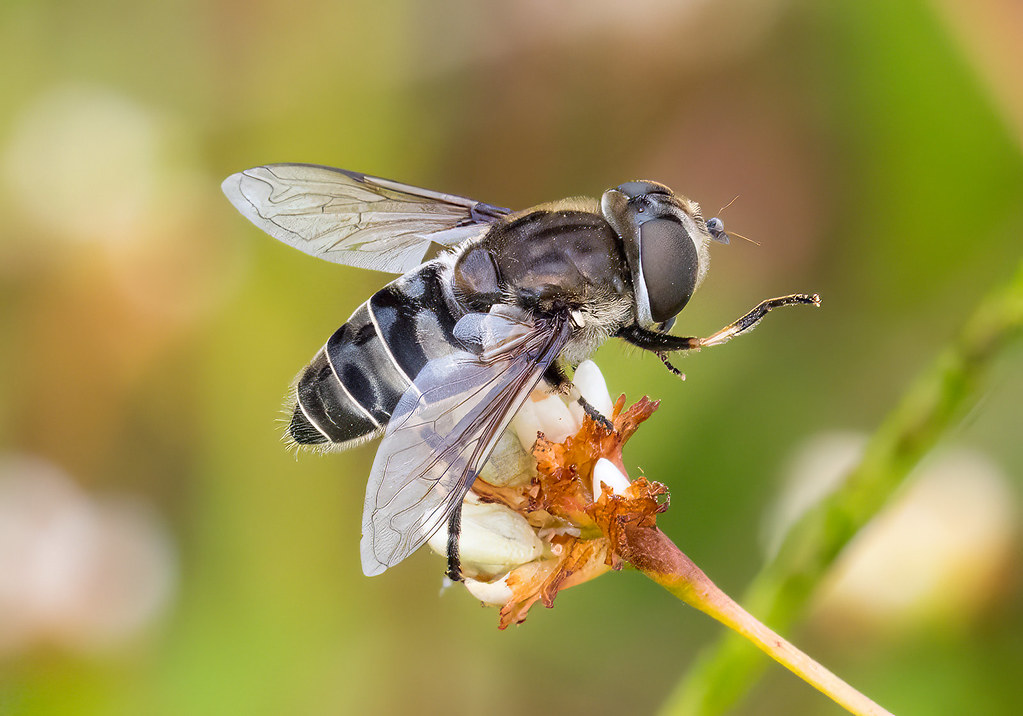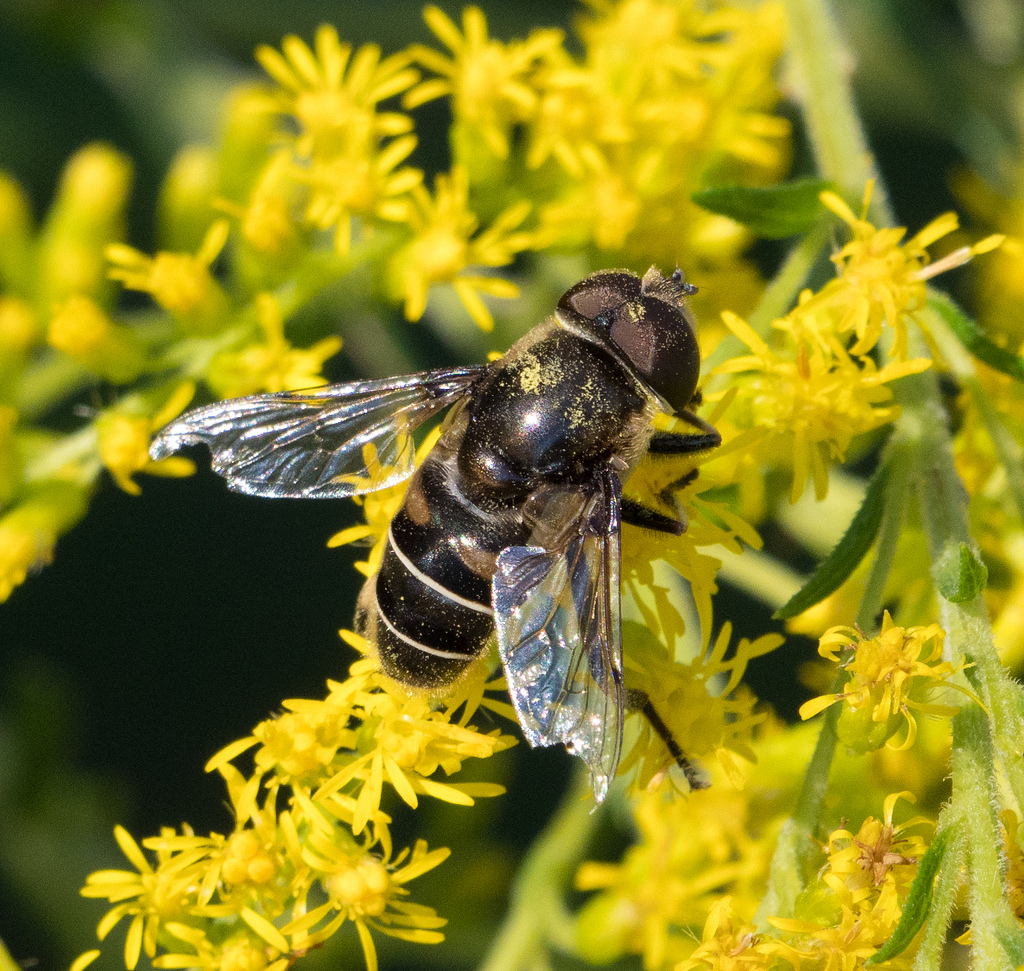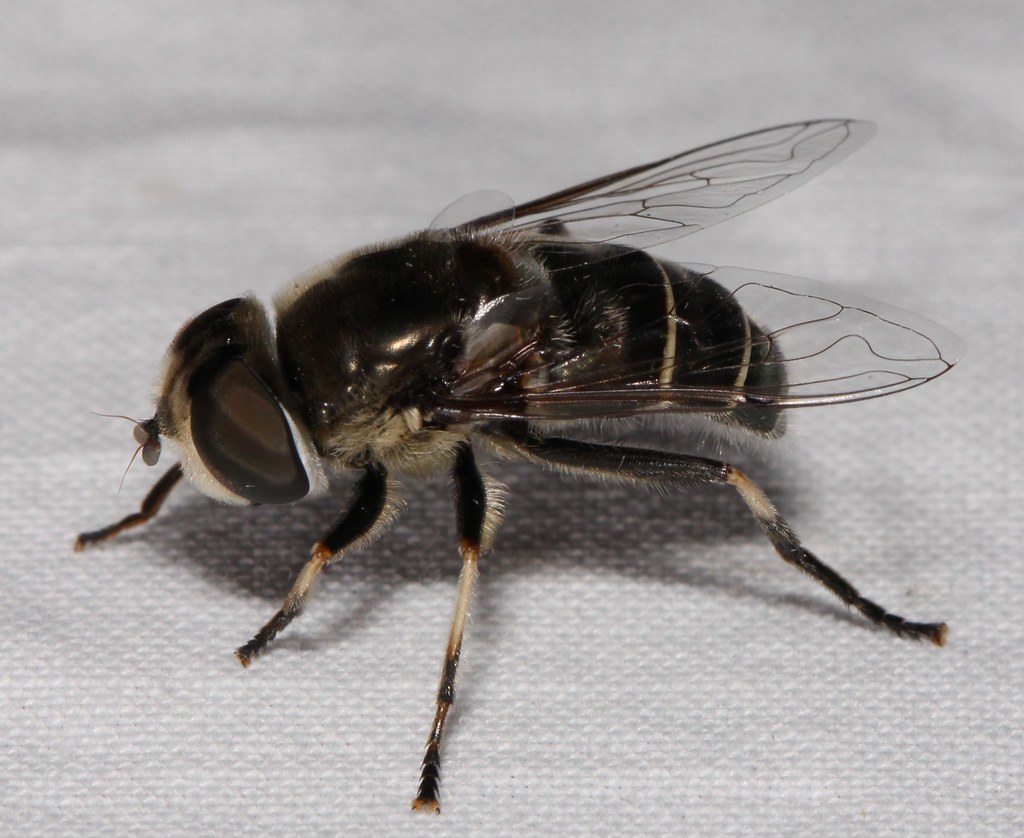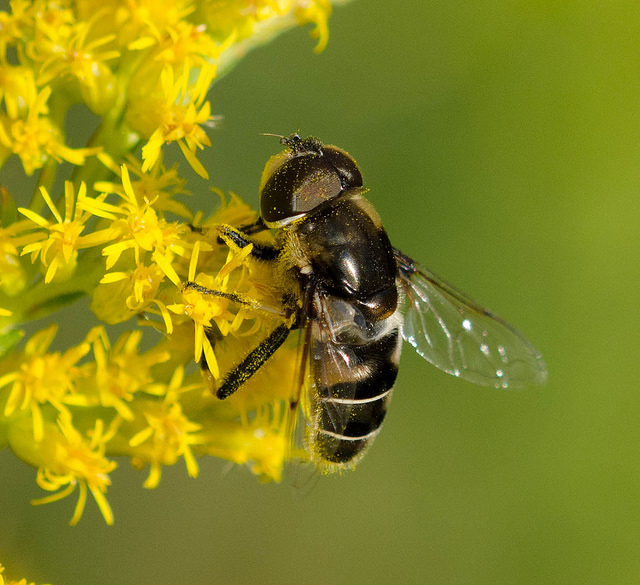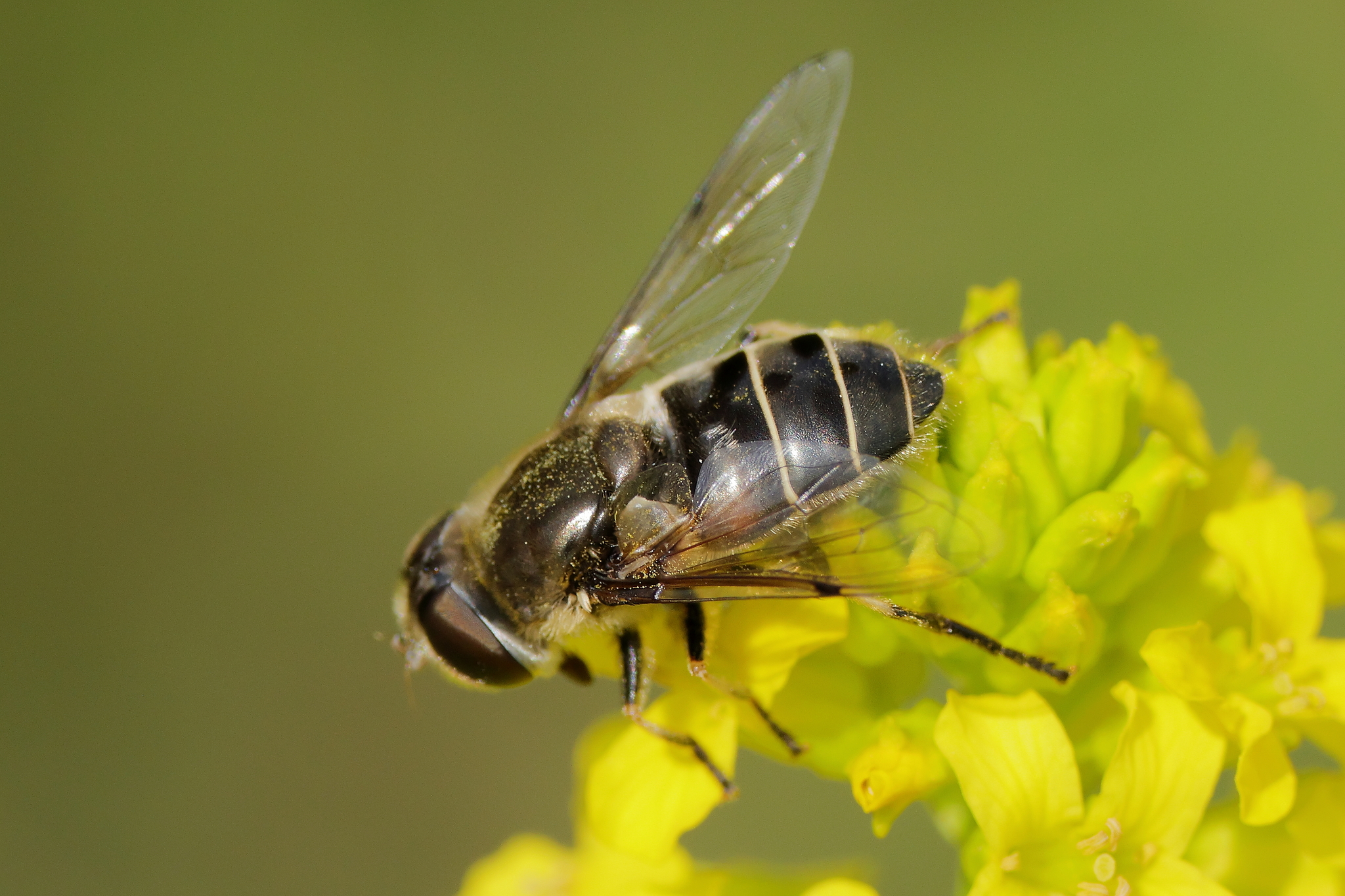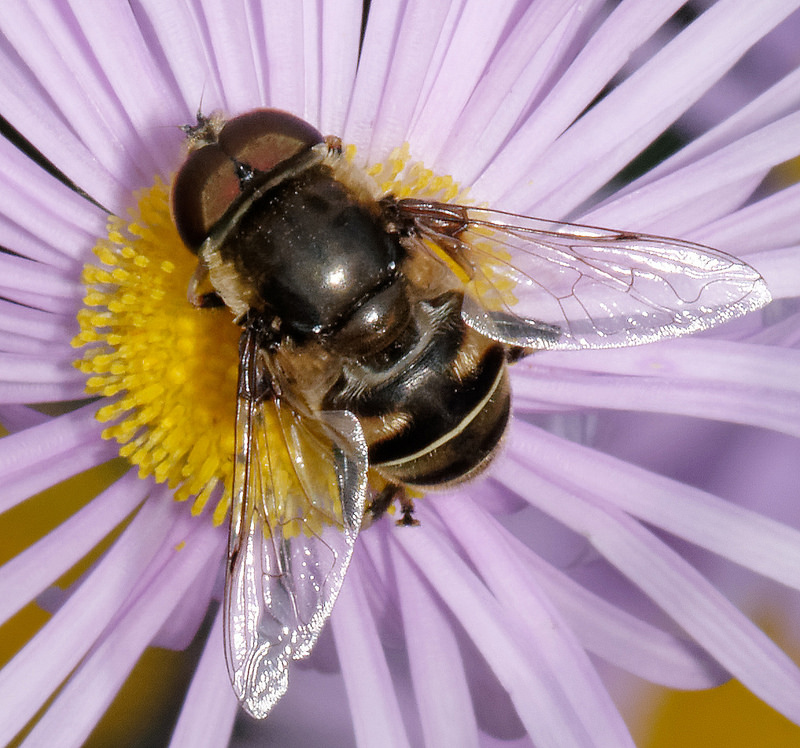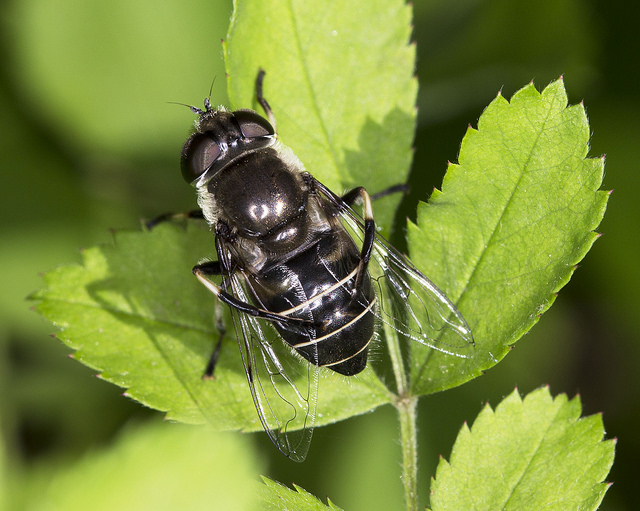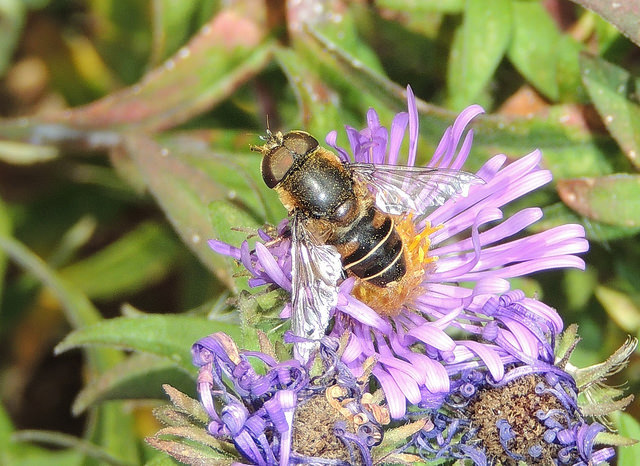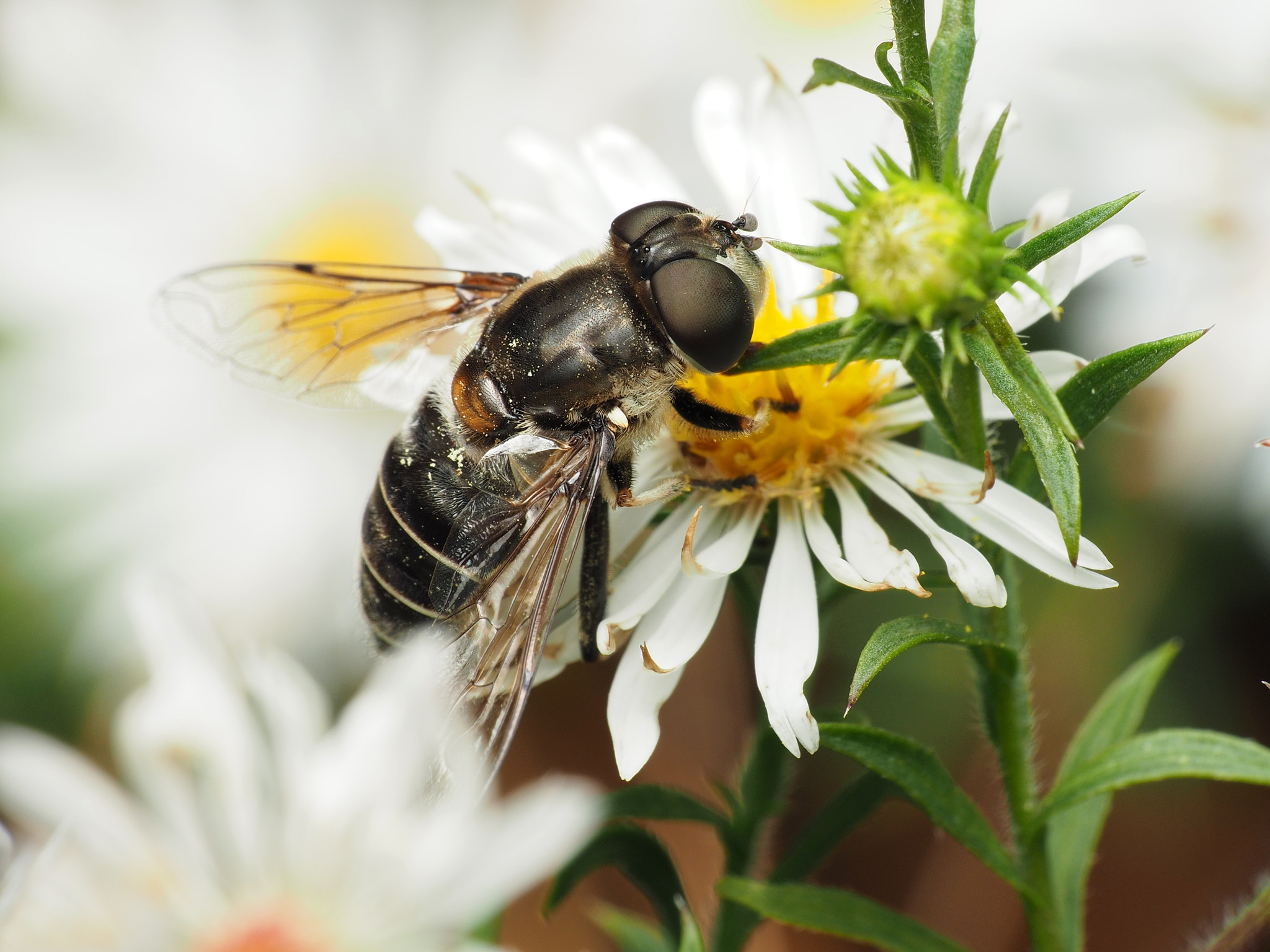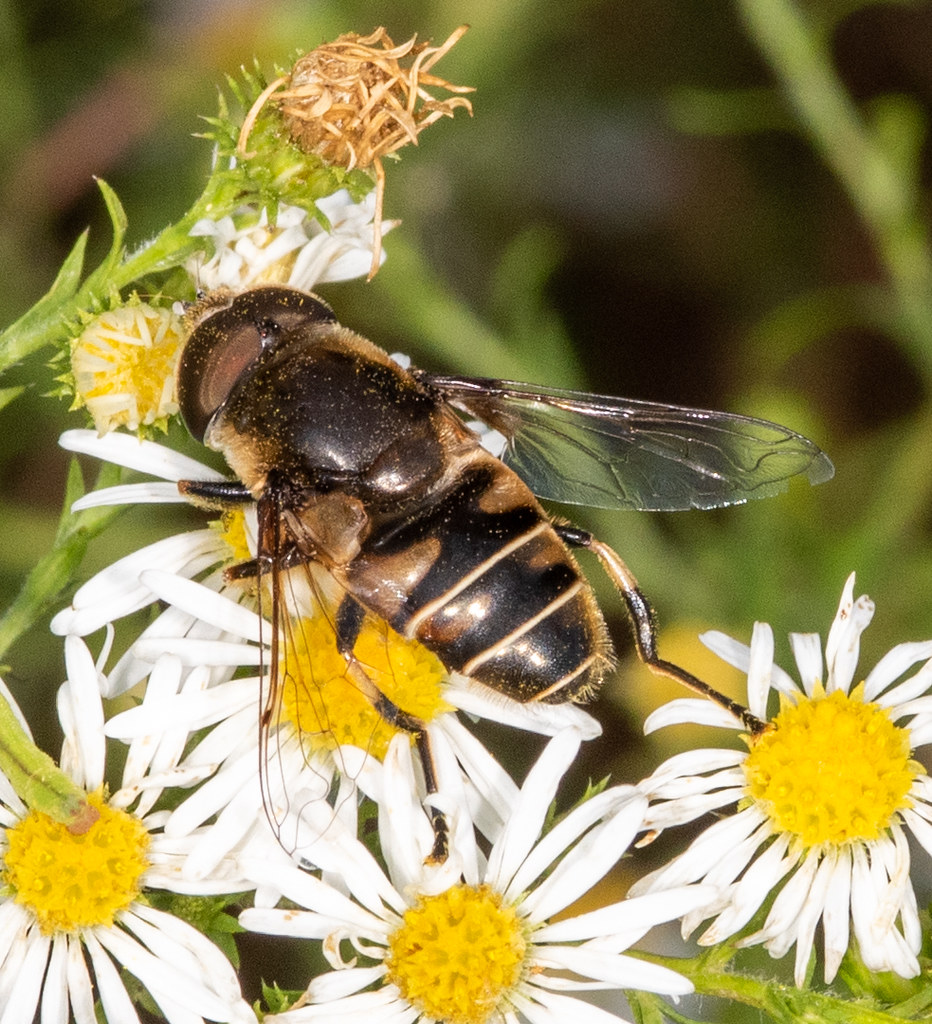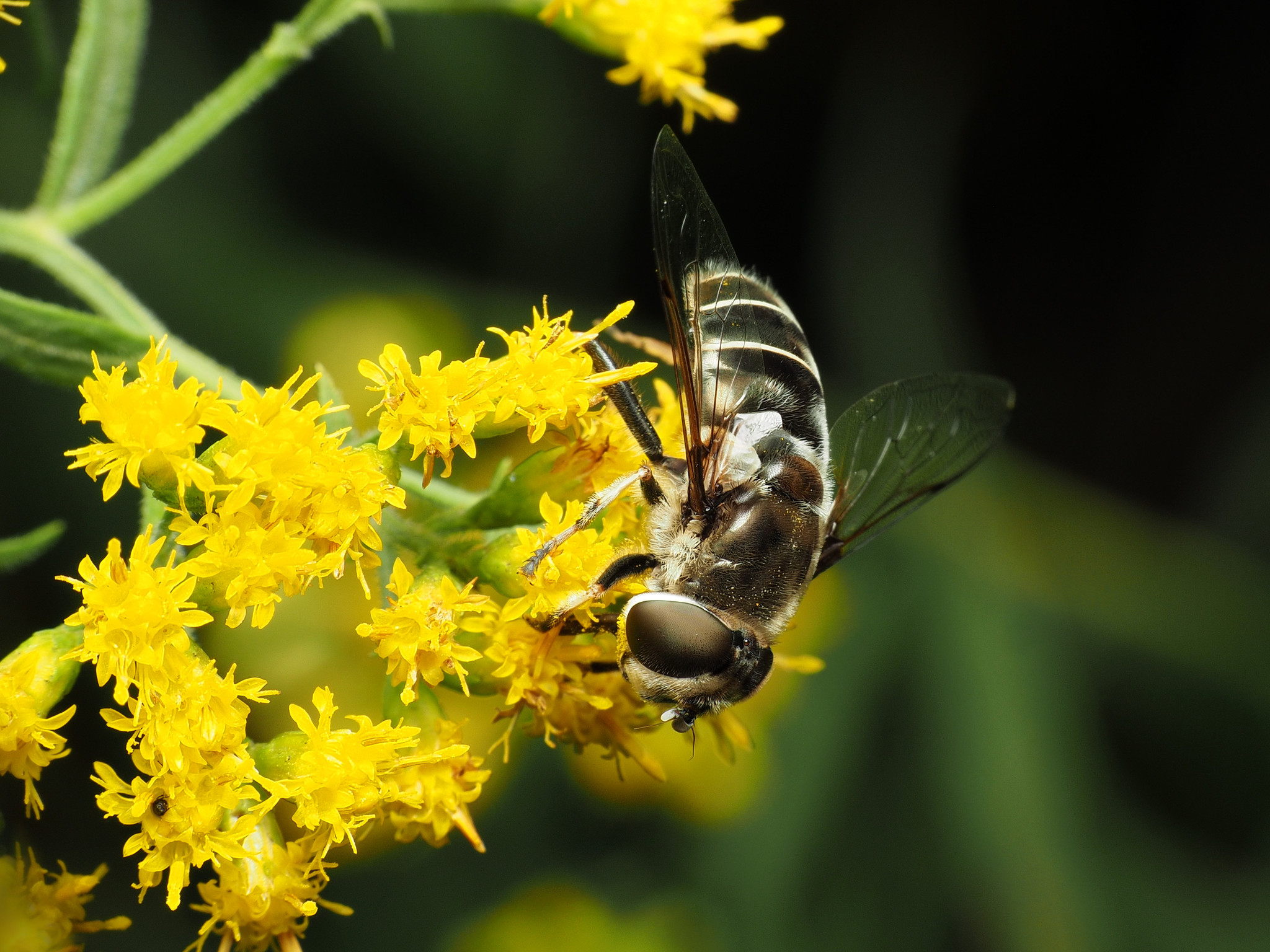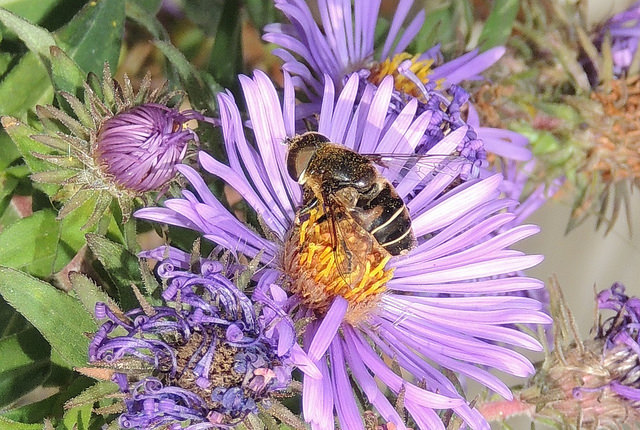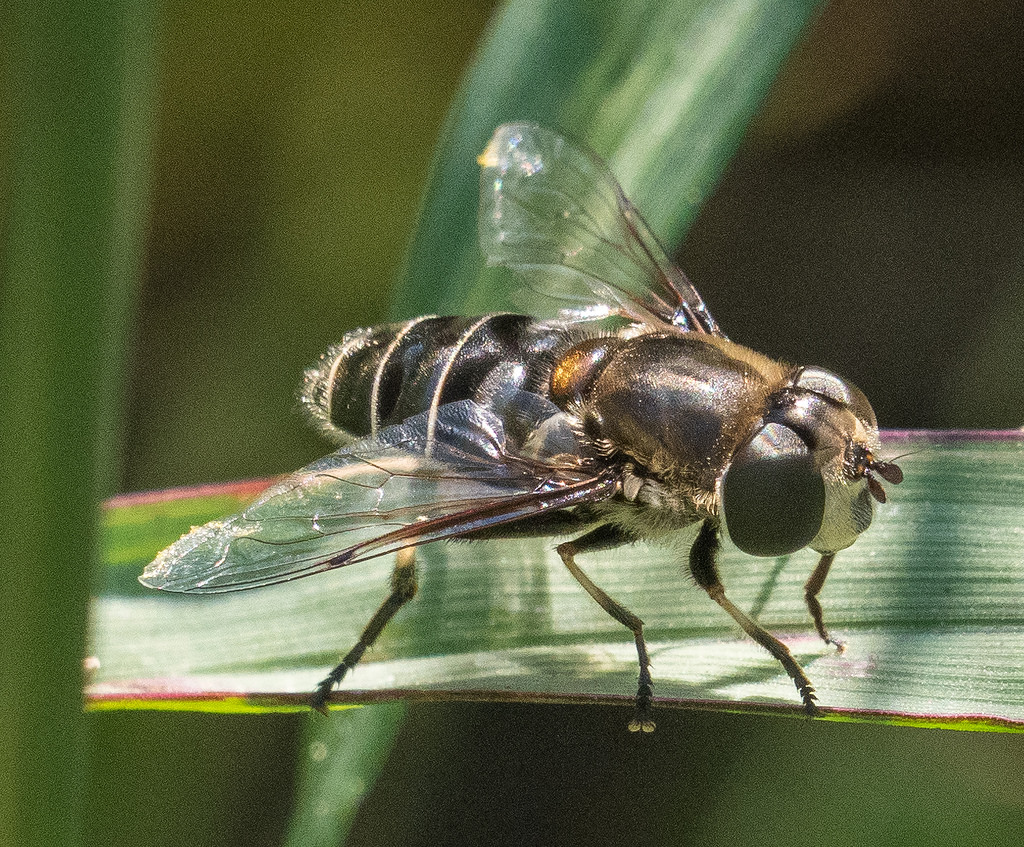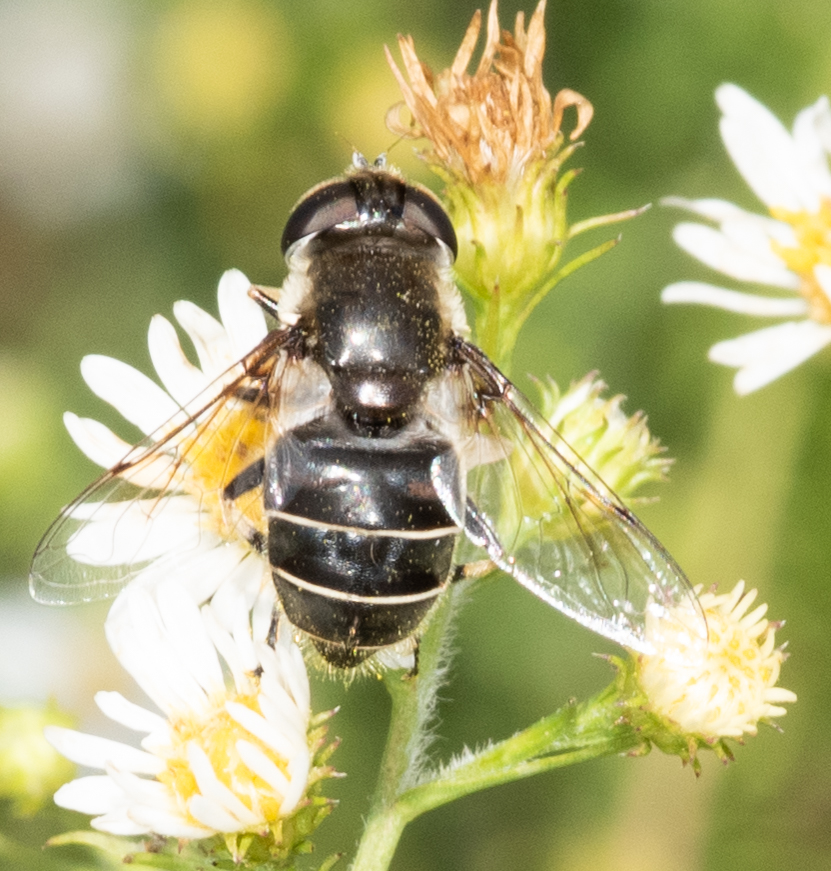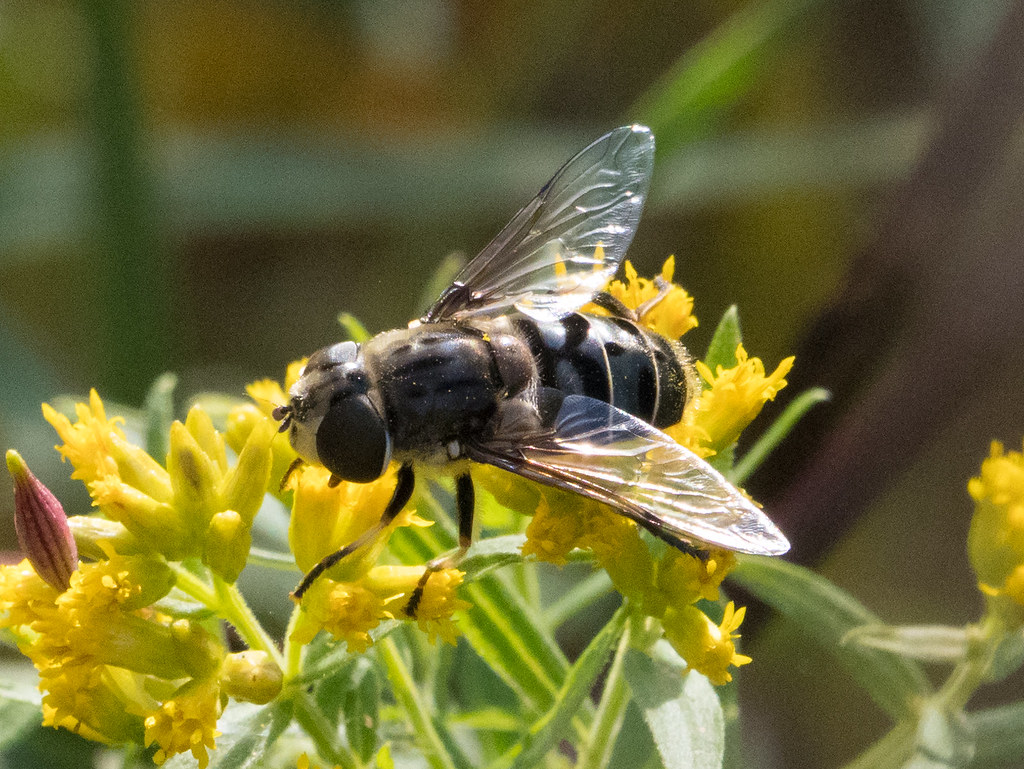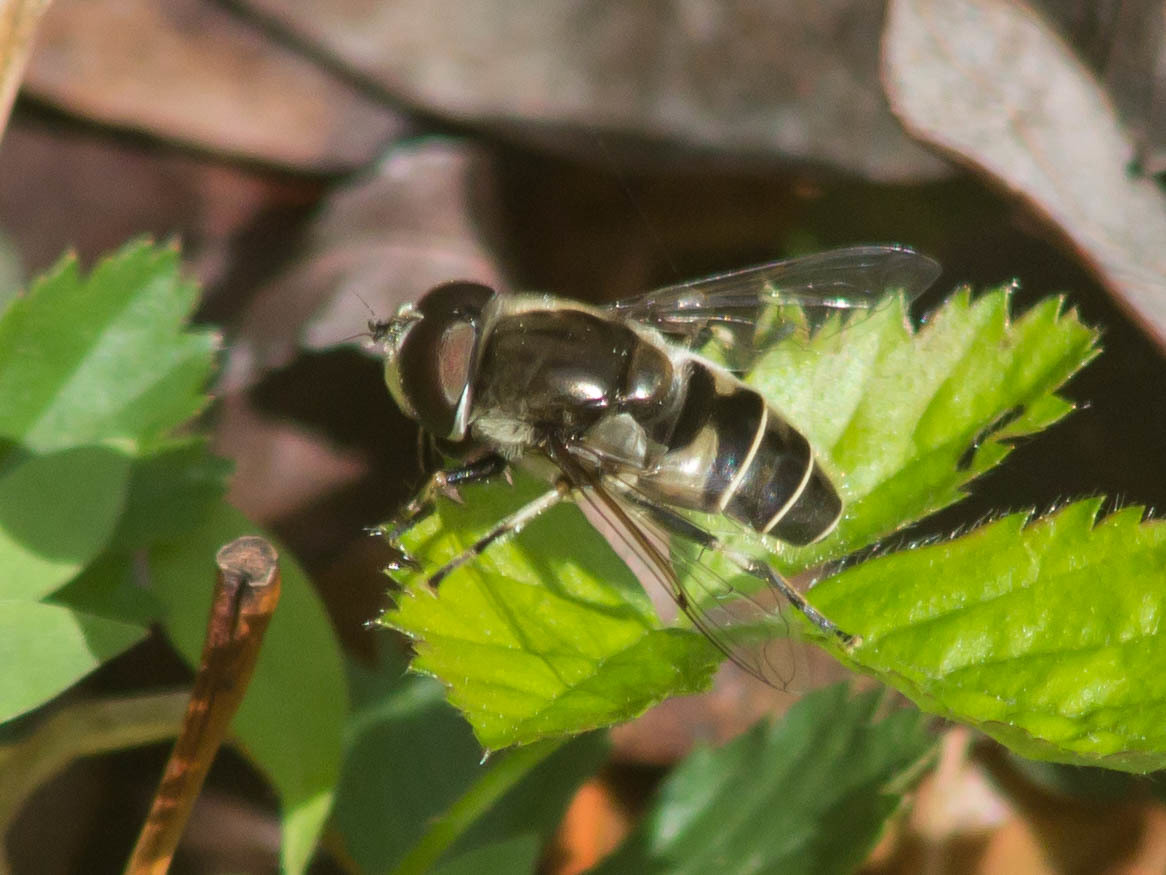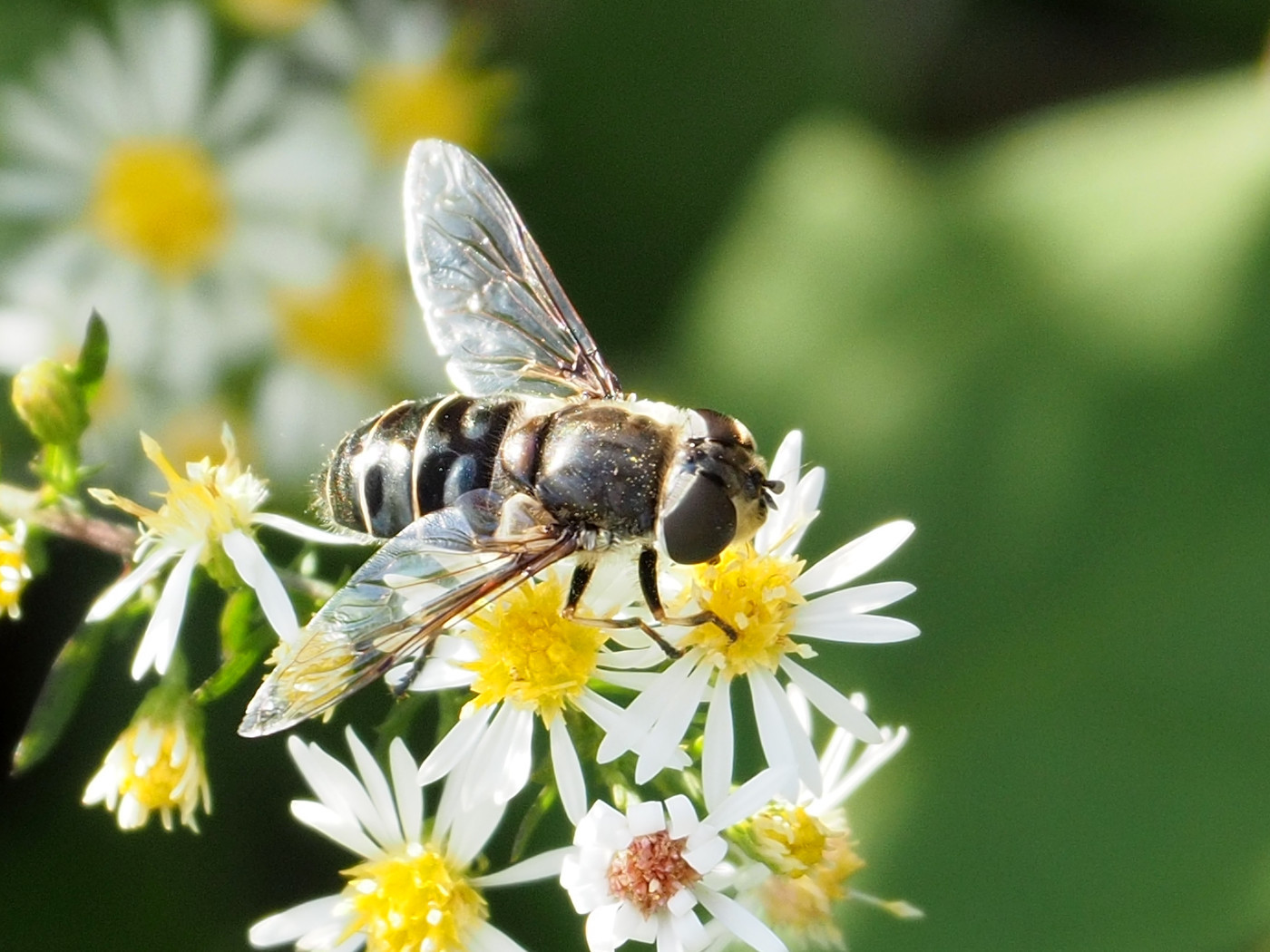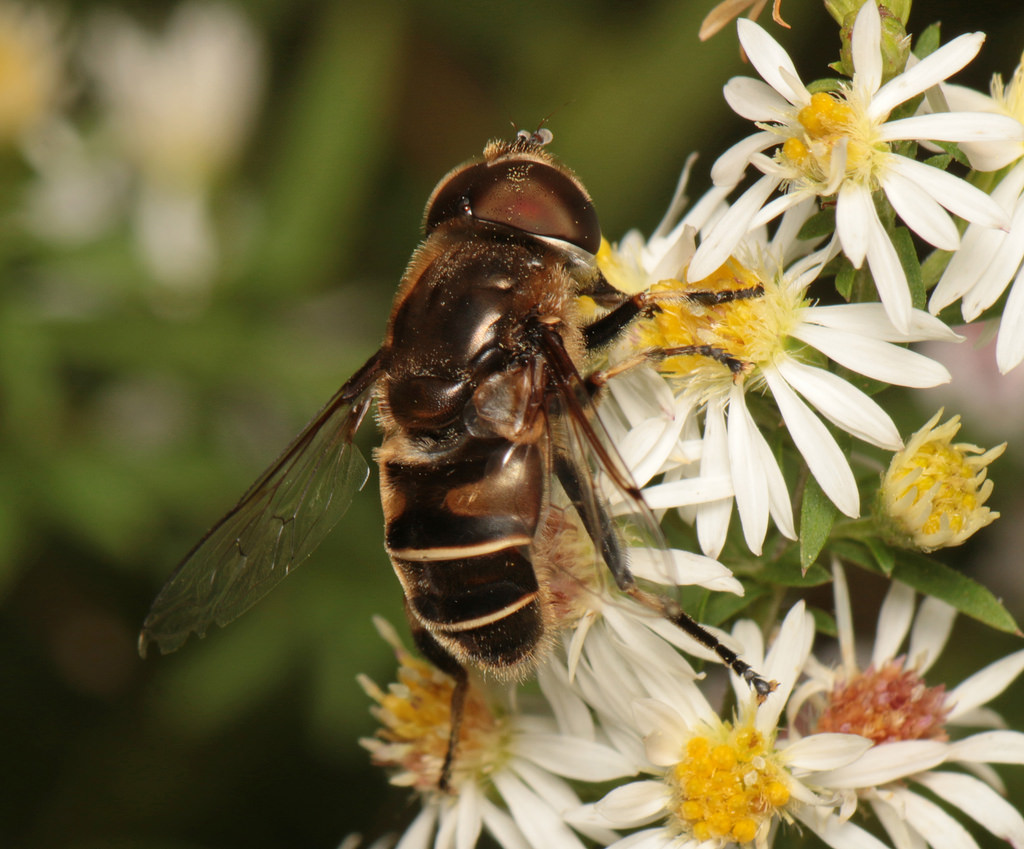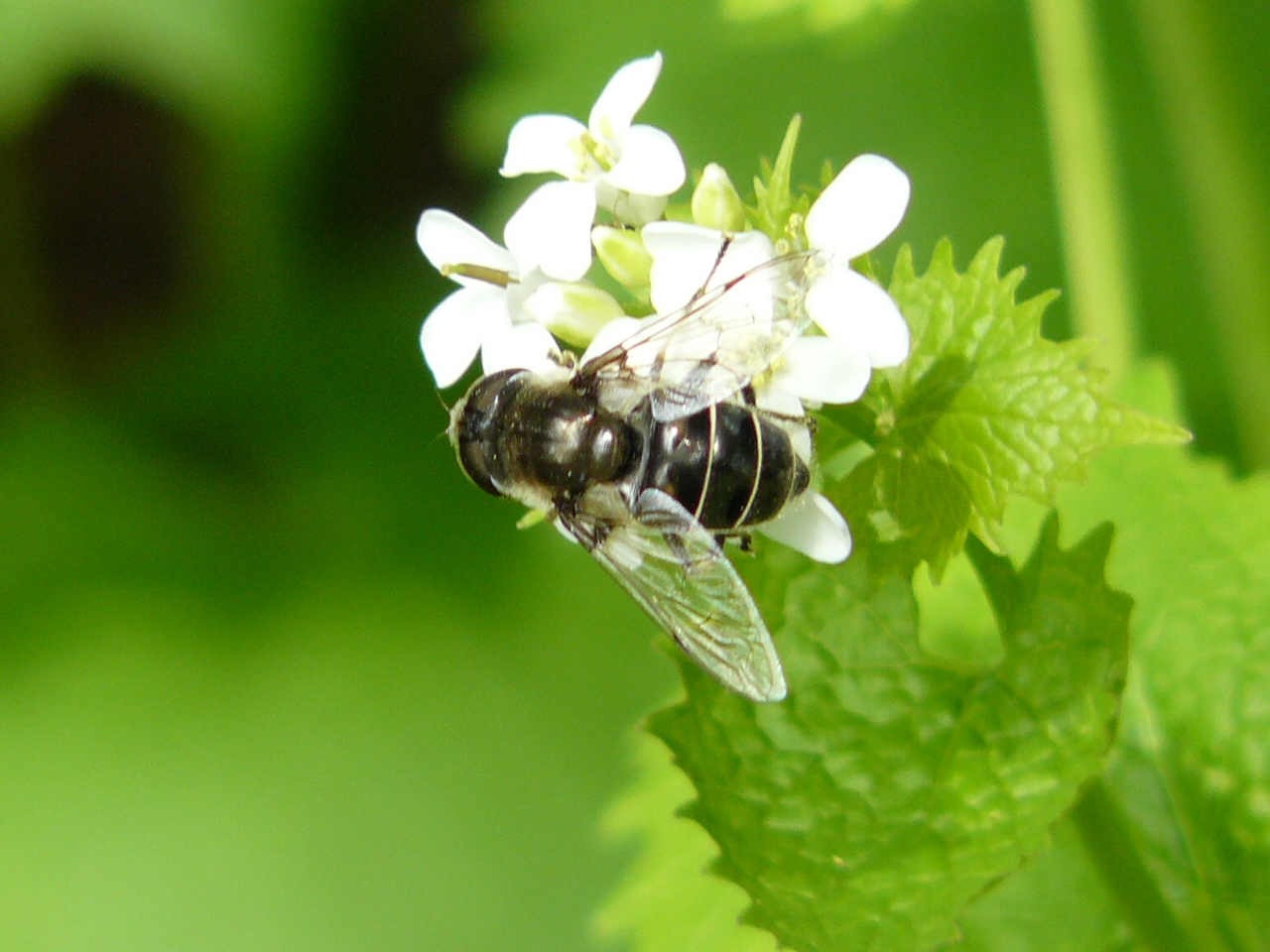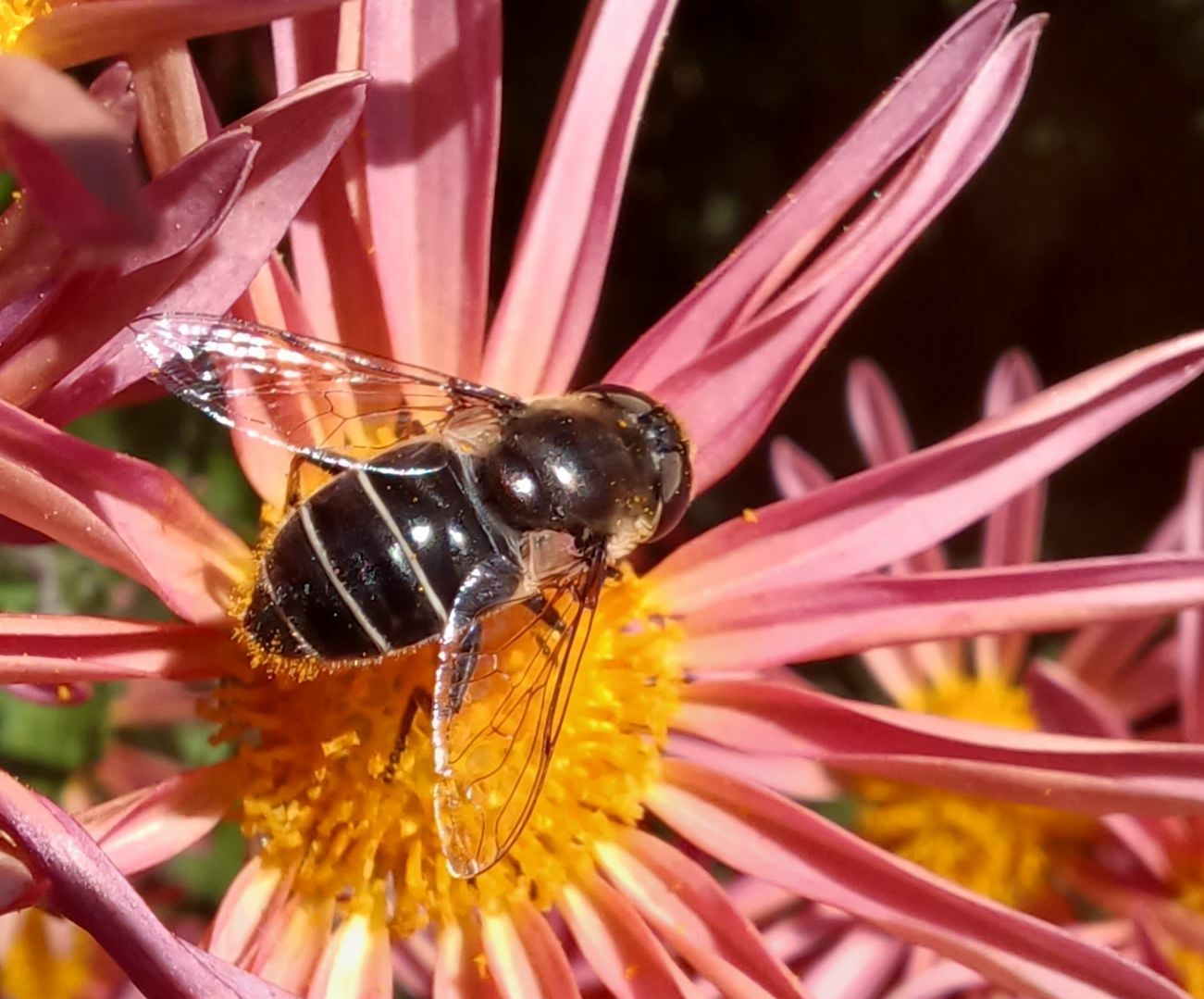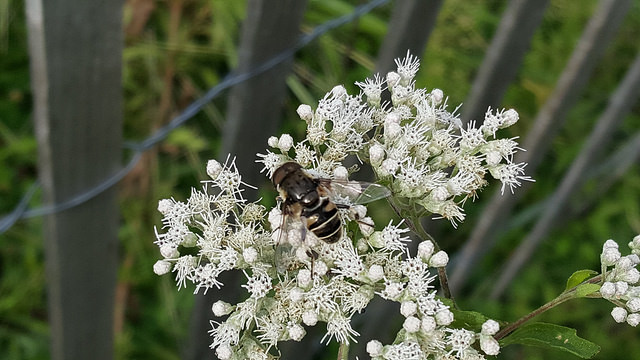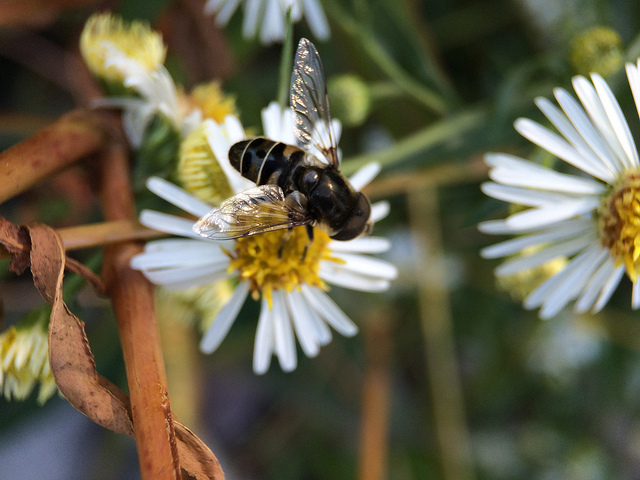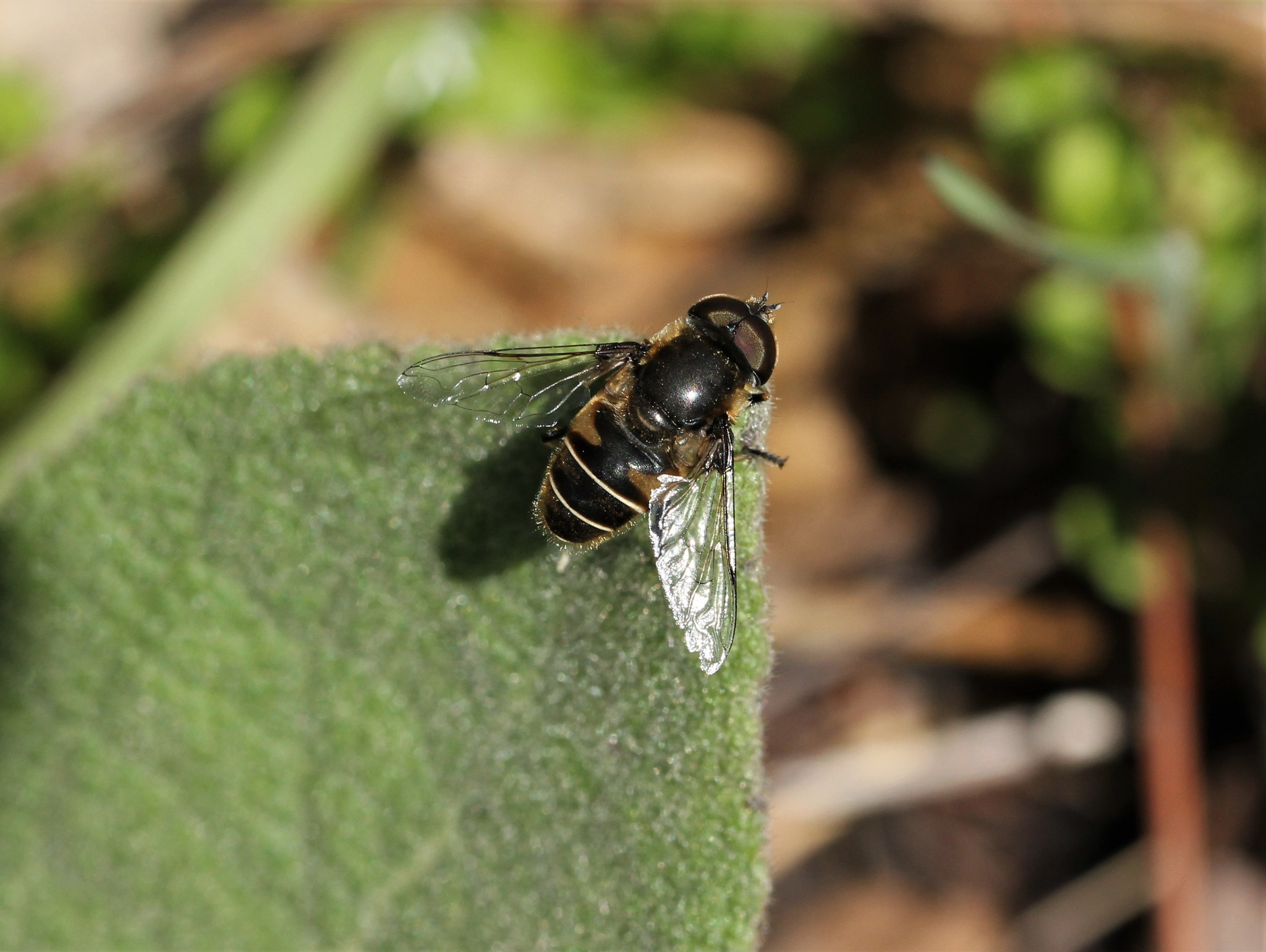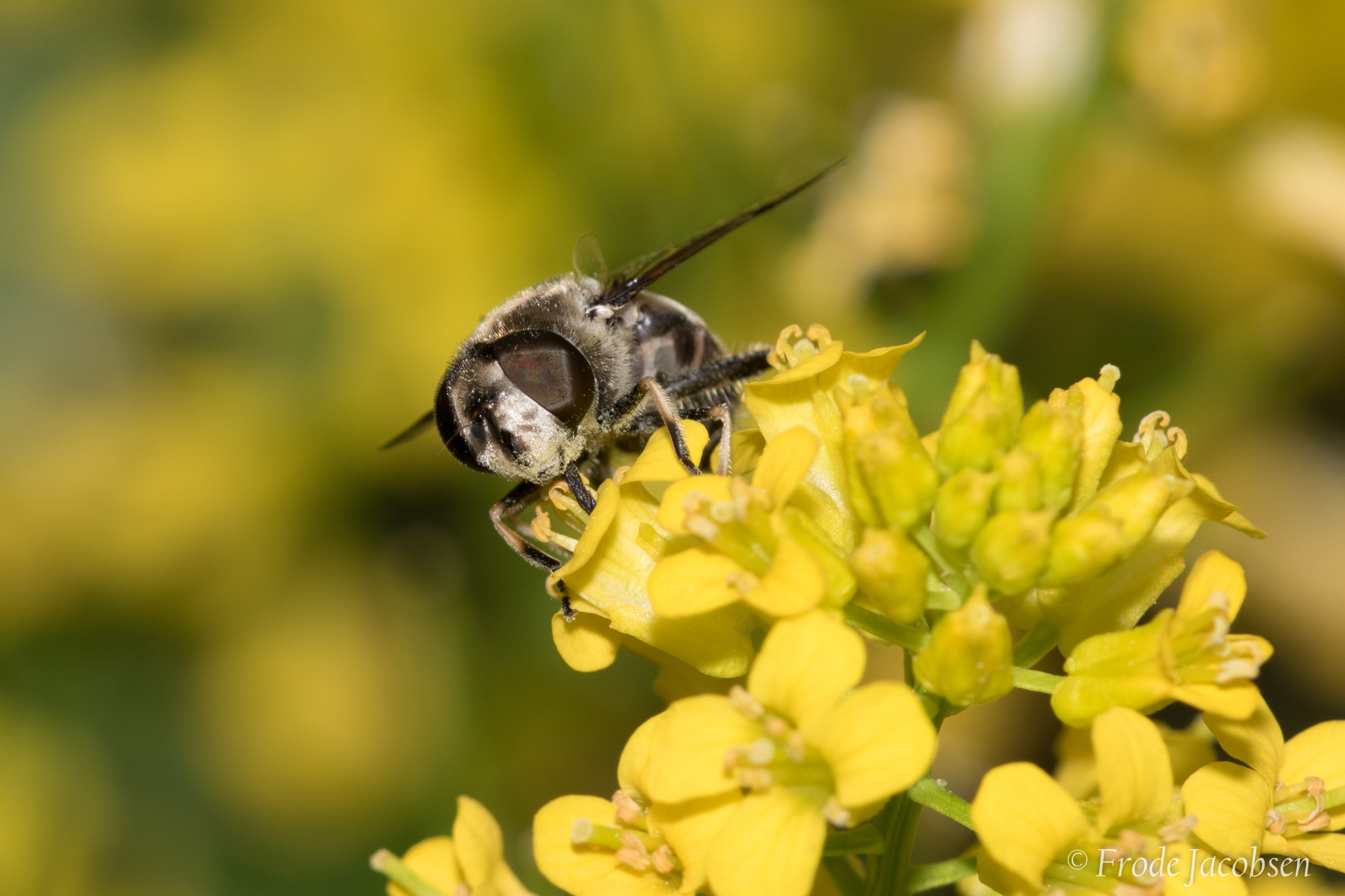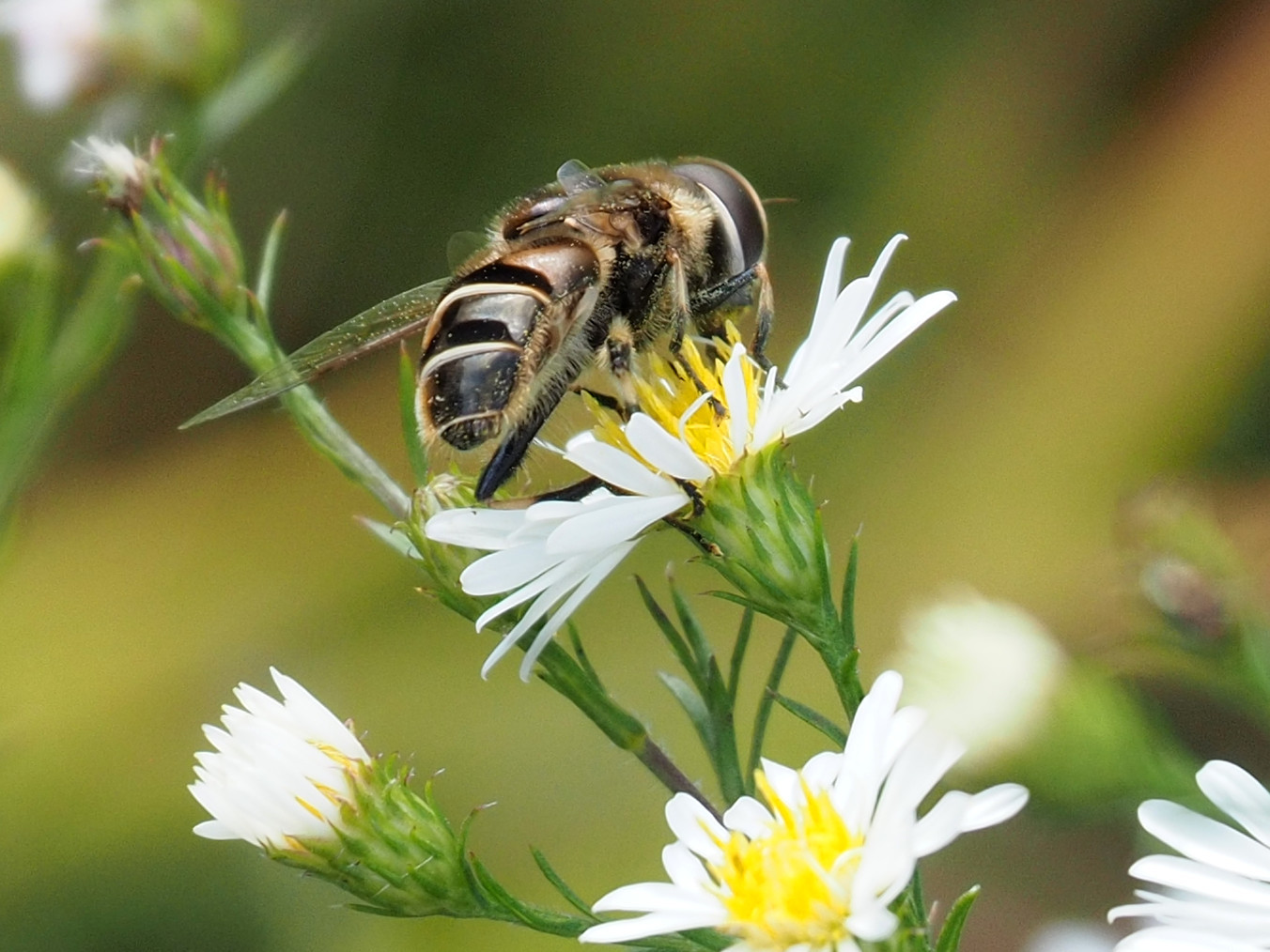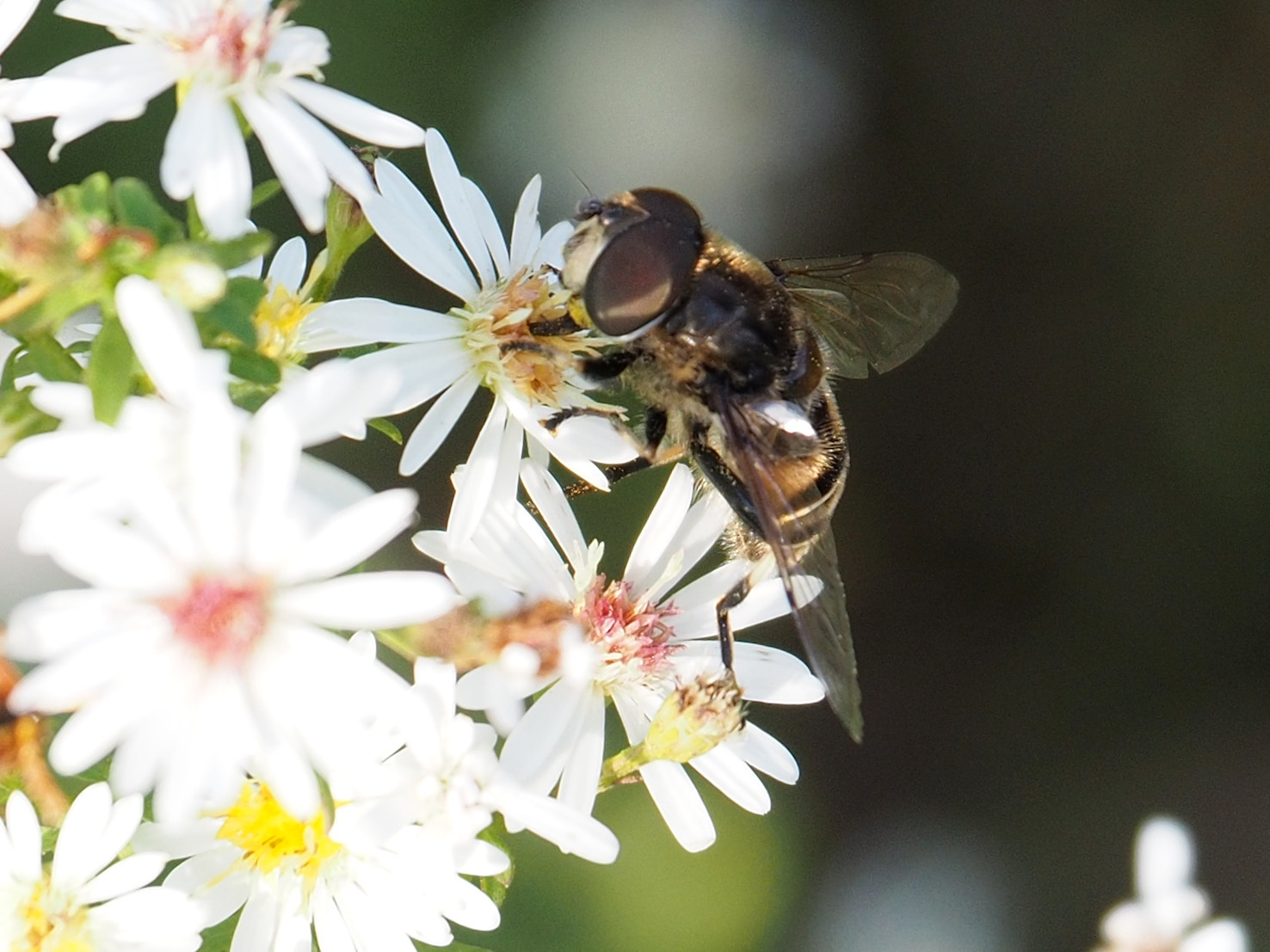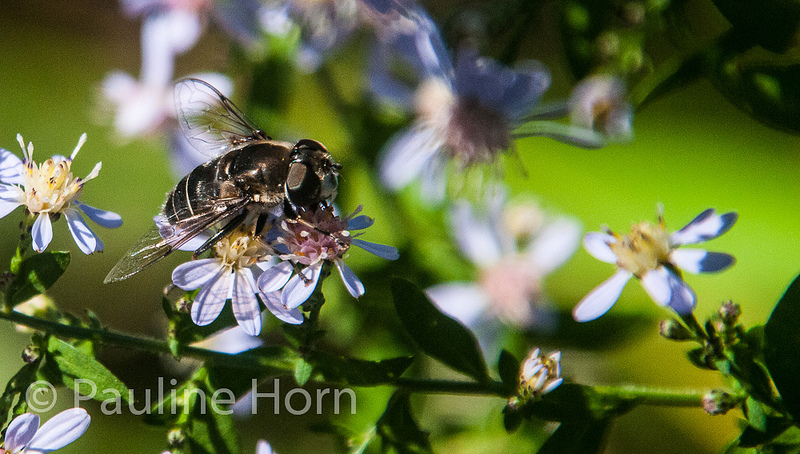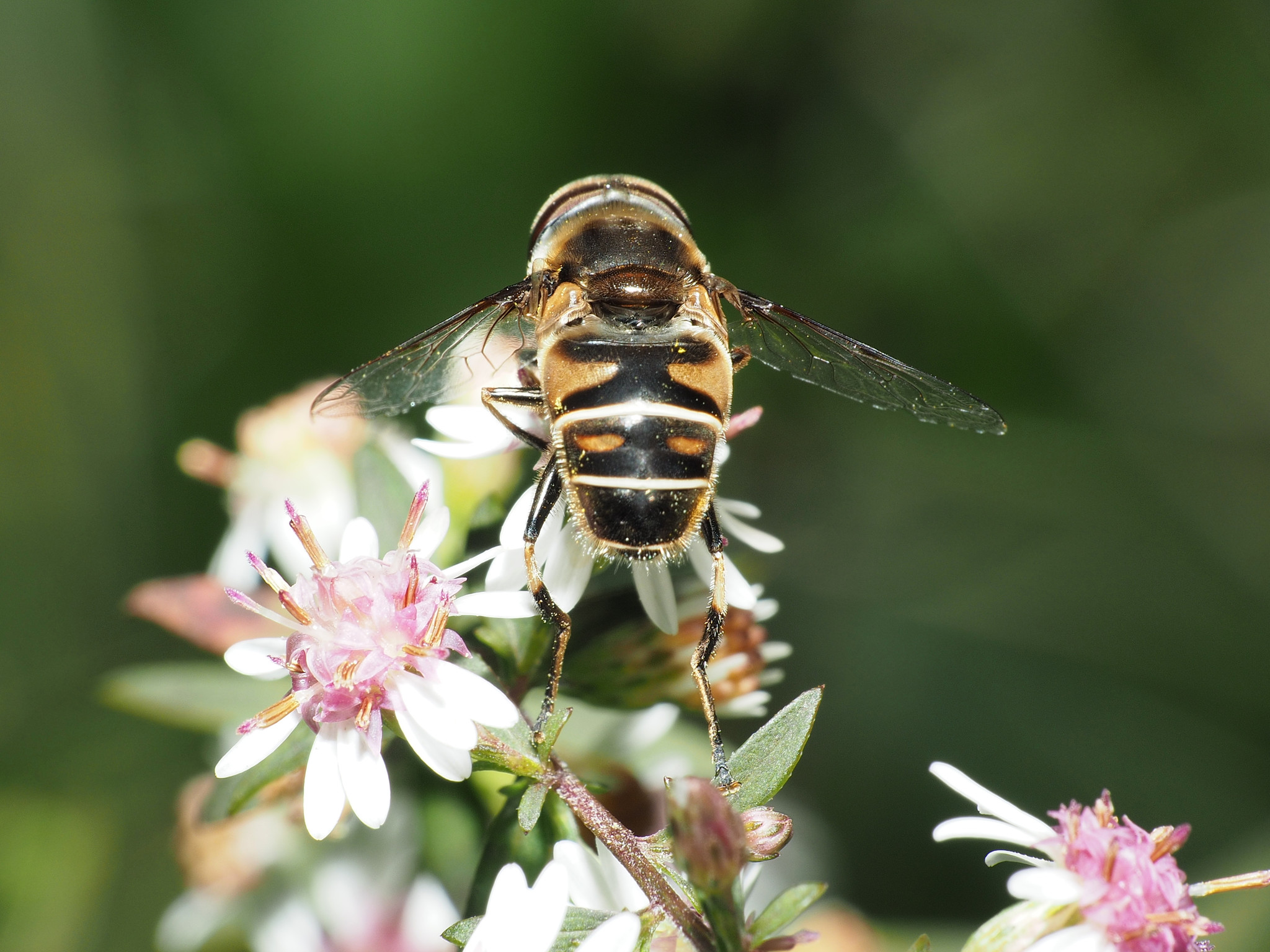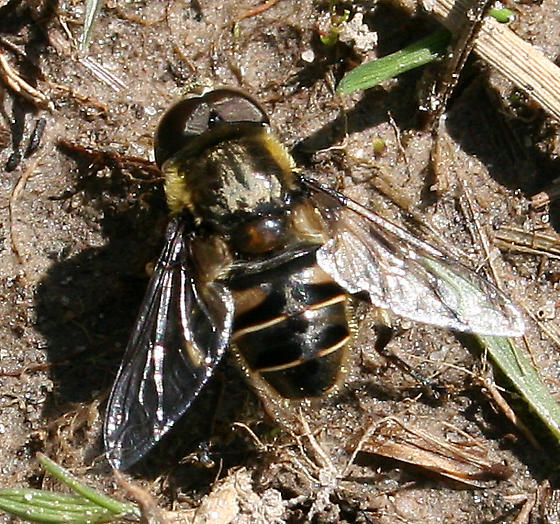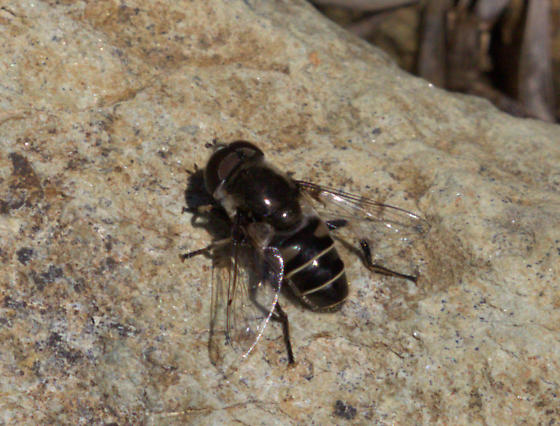Map Snapshot






















215 Records
Status
Common in many parts of Maryland, especially in the fall. In Maryland, it flies primarily from April to May and September to early November. The summer gap in observations suggests the possibility that this is at least in part a migratory species in the state. Some nearctic flower flies (family Syrphidae) have been found to be migratory, but flower fly migration in North America has been little studied overall. In the fall it can be found on a variety of flowering plants in meadows and fields near the coast, but it is otherwise associated with forests.
Description
By far the most common large flower fly in Maryland with the general pattern of a wide, dark abdomen punctuated by several thin white transverse lines. The small black triangular area at the base of the wings distinguishes it from all other members of the genus except E. saxorum, which shows a variable amount of metallic blue, visible from certain angles, on the abdomen and/or scutum.
Seasonality Snapshot
Source: Wikipedia
| Eristalis dimidiata | |
|---|---|

| |
| Scientific classification | |
| Domain: | Eukaryota |
| Kingdom: | Animalia |
| Phylum: | Arthropoda |
| Class: | Insecta |
| Order: | Diptera |
| Family: | Syrphidae |
| Genus: | Eristalis |
| Species: | E. dimidiata
|
| Binomial name | |
| Eristalis dimidiata (Wiedemann, 1830)
| |
| Synonyms[1] | |
Eristalis dimidiata, the black-shouldered drone fly, is a species of hoverfly native to much of Canada and the eastern and northern United States.[1][2][3][4][5] It flies year-round in southern areas and from late March to mid-November further north.[5] It is one of the earliest hoverflies to fly in the spring, and as such likely overwinters as an adult.[5] It lives primarily in forests.[5]
Hoverflies get their names from the ability to remain nearly motionless while in flight. The adults are also known as flower flies as they are commonly found on and around flowers, from which they get both energy-giving nectar and protein-rich pollen. The larvae are aquatic filter-feeders of the rat-tailed type.[4][6]
Black-shouldered drone flies have opaque, infuscated humeral cells (at the base of their wings), with the rest of the wing entirely hyaline (transparent), except for possibly a diffuse medial spot on the wing. Their hind tarsi are entirely black. Overall, much of the fly is black, though the wings are mostly transparent and the posterior margins of the abdominal segments are white. Their pterostigma are dark brown and distinct.[4][5]


References
[edit]- ^ a b "Eristalis dimidiata Report". Integrated Taxonomic Information System. Retrieved 2018-04-30.
- ^ "Eristalis dimidiata species details". Catalogue of Life. Retrieved 2018-04-30.
- ^ "Eristalis dimidiata". GBIF. Retrieved 2018-04-30.
- ^ a b c "Eristalis dimidiata Species Information". BugGuide.net. Retrieved 2018-04-30.
- ^ a b c d e Skevington, Jeffrey H.; Locke, Michelle M.; Young, Andrew D.; Moran, Kevin; Crins, William J.; Marshall, Stephen A. (2019). Field Guide to the Flower Flies of Northeastern North America. Princeton, New Jersey: Princeton University Press. ISBN 9780691189406.
- ^ Williston, S.W. (1887). "Synopsis of the North American Syrphidae". Bulletin of the United States National Museum. 31: 1–335.
Further reading
[edit]- Telford, H. S. (1970). "Eristalis (Diptera: Syrphidae) from America North of Mexico". Annals of the Entomological Society of America. 63 (5): 1201–1210. doi:10.1093/aesa/63.5.1201.
External links
[edit] Media related to Eristalis dimidiata at Wikimedia Commons
Media related to Eristalis dimidiata at Wikimedia Commons

